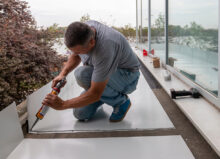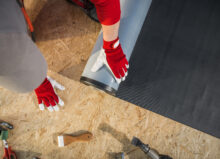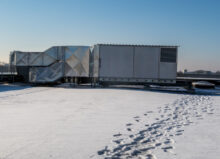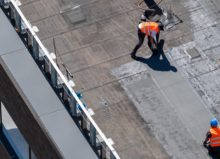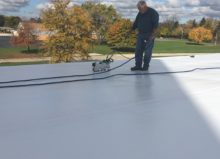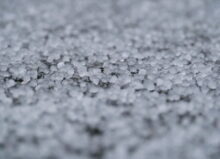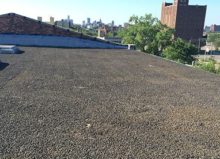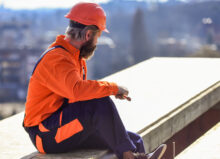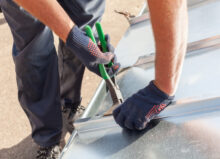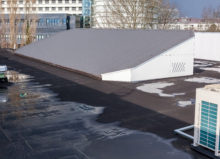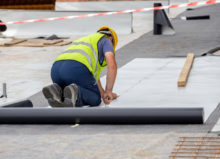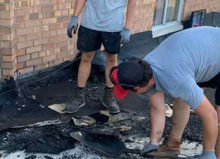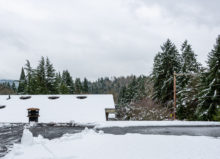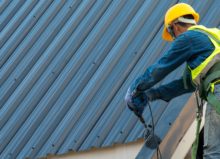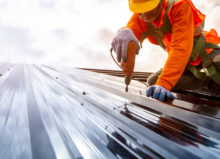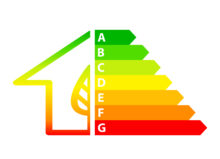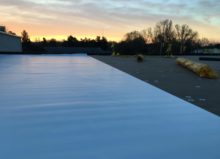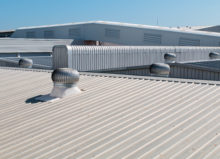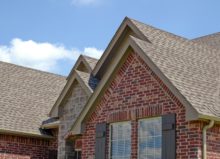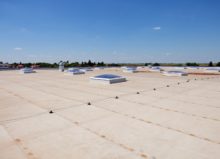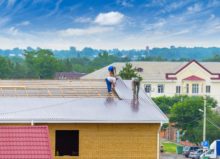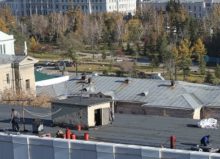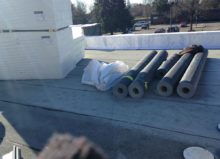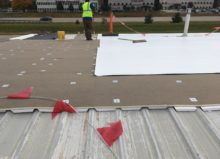How Snow Affects Commercial Flat Roofs
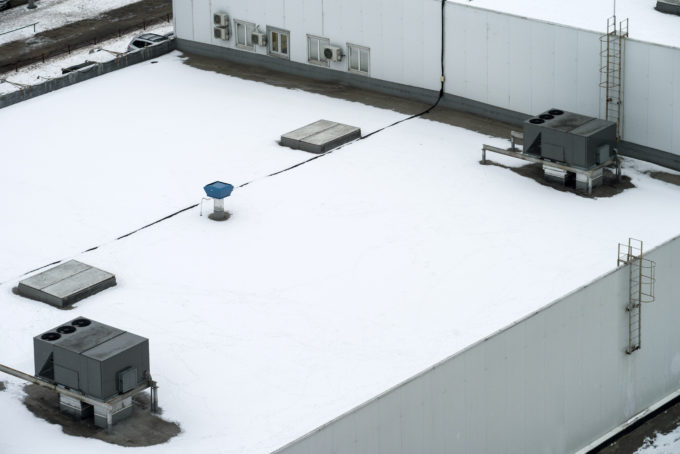
While snow is undoubtedly a beautiful staple of winter in the Midwest, too much of it can be bad news for business owners like you. It’s estimated that snow weighs about 20 pounds per cubic foot or around 1.25 pounds per inch of depth. You can do the math based on the size of your roof to determine how many pounds of pressure are being placed on it—the bottom line is that if the snowfall isn’t cleared in a timely manner, your roof could feel the effects.
Signs Your Flat Roof is Experiencing Stress from Heavy Snow
Some of the effects of snow on a flat roof include:
Ponding
If drainage systems become obstructed, snow will have nowhere to go as it melts on the flat roof. This can lead to the ponding of water, which can result in mold and mildew growth, leaks, and damage to the roofing membrane.
Bowing
Unlike rain, snow accumulates on the roof—it doesn’t run off into drainage systems and disperses away from the property. If too much snowfall builds up, the weight of the snow could exceed what the flat roof can handle, which could lead to bowing or sagging. A bowing roof is often evident that its structural integrity has been impacted, and in worst-case scenarios, it could lead to roof collapse.
Leakage
As we said above, ponding water often leads to roof leaks. Water has to go somewhere, and if it’s not able to drain correctly, there’s a chance that it could enter the property and lead to costly damage and possibly even business interruption.
General Freeze-Thaw
Potholes on roads result from water freezing and thawing over and over on the pavement, which weakens materials and causes parts of concrete to fall apart. Flat roofs can be similarly impacted by the freeze-thaw cycle. When the snow melts, it may pond on the roof’s surface, and if it can’t drain, it will re-freeze when temperatures cool. Over time, water will likely get into cracks and crevices on the roof. When it freezes, it can gradually damage the roof, which may lead to structural damage and leaks.
How to Safely Remove Snow
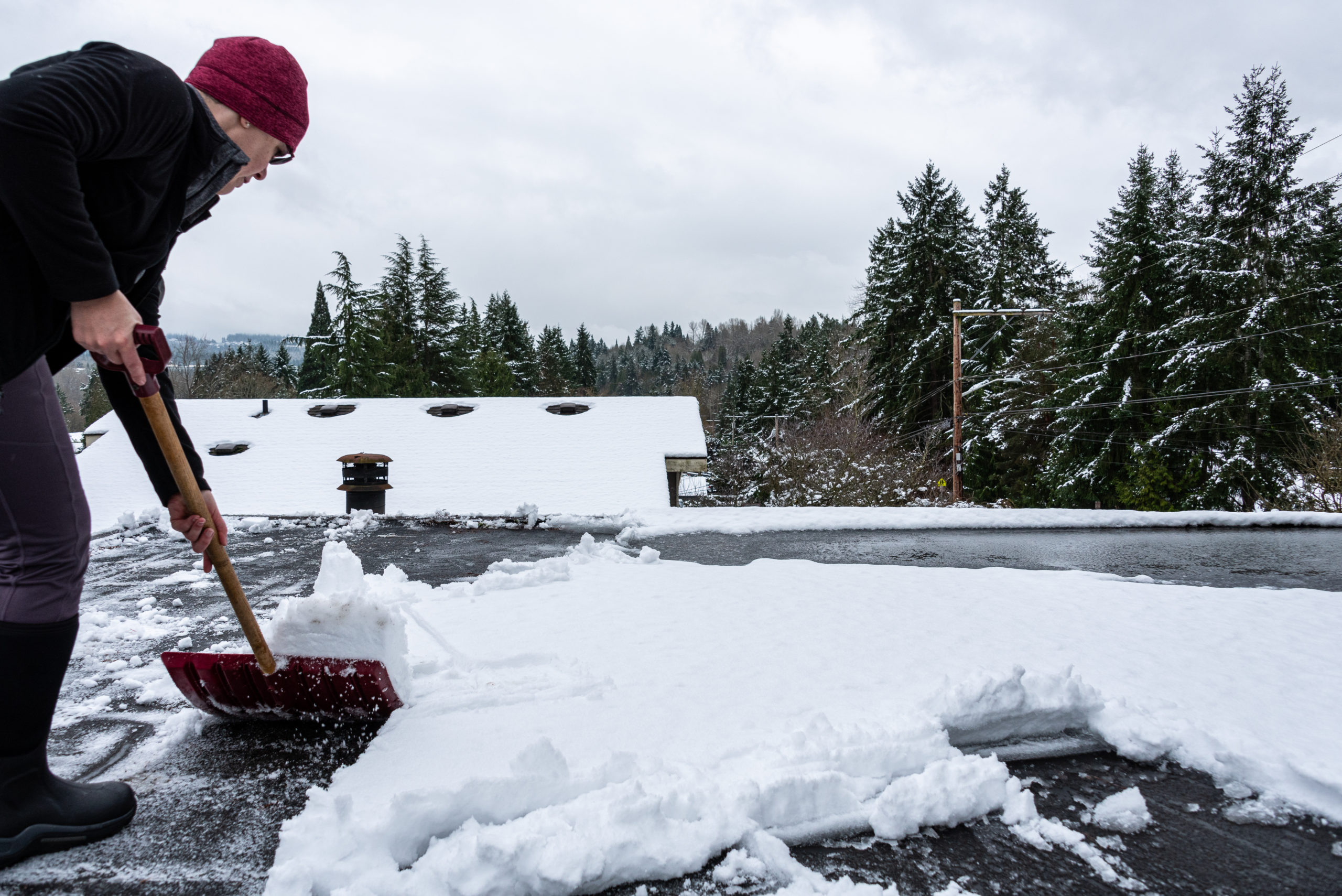
As a property manager, the best course of action is to ensure that any snowfall is removed from the roof in a timely manner. However, it’s important to note that you can’t remove snow from a roof the same way you remove it from a driveway, sidewalk, or parking lot. Here are some tips on how to perform a safe and effective flat roof snow removal:
- Use Plastic Snow Shovels With Blunt Edges: Plastic tools don’t tend to dig into roofing materials or roof membranes the same way that metal tools would. Using blunt-edge shovels will also prevent roof damage.
- Pay Attention to the Roof Edges: Ice dams tend to form on roof edges, obstructing proper drainage channels.
- Let a Professional Handle It: Even with the right tools, you can still face obstacles if you have never handled a roof snow removal before. We always suggest contacting a professional because some DIY jobs can lead to roofing damage.
Get Commercial Flat Roof Inspections & Maintenance Services Today
If you’ve never handled a flat roof snow removal before, let Summit Commercial Roofing handle it for you. Founded over 50 years ago, we’re a family-owned and -operated roofing company in Southeast Michigan that specializes in commercial flat roofing maintenance, installations, and repairs. Our team has the experience and know-how to handle all flat roofing needs, including winter snow removal.
Contact us today to learn more about our commercial roof maintenance and snow removal services or to request a roof inspection.

